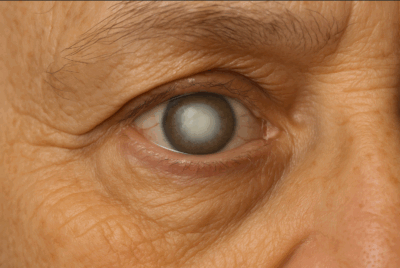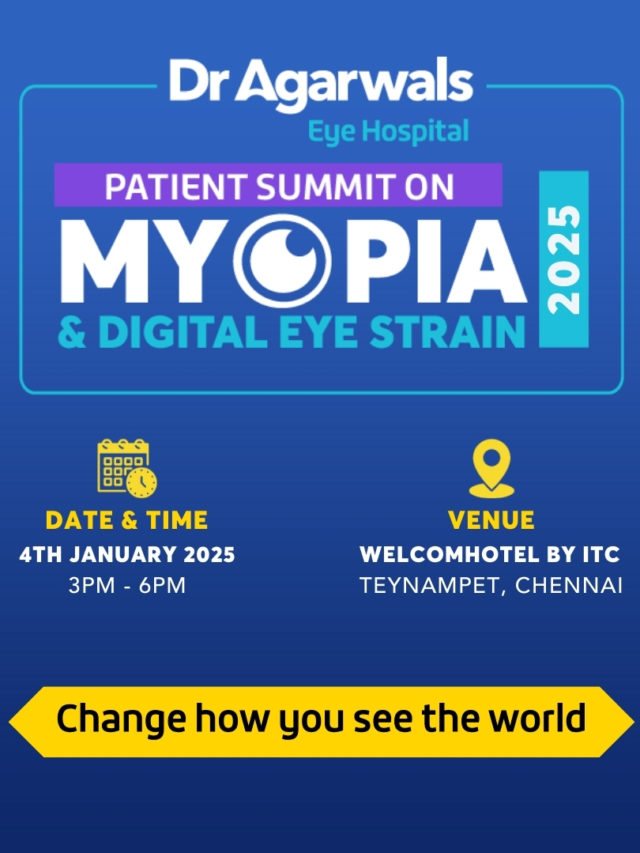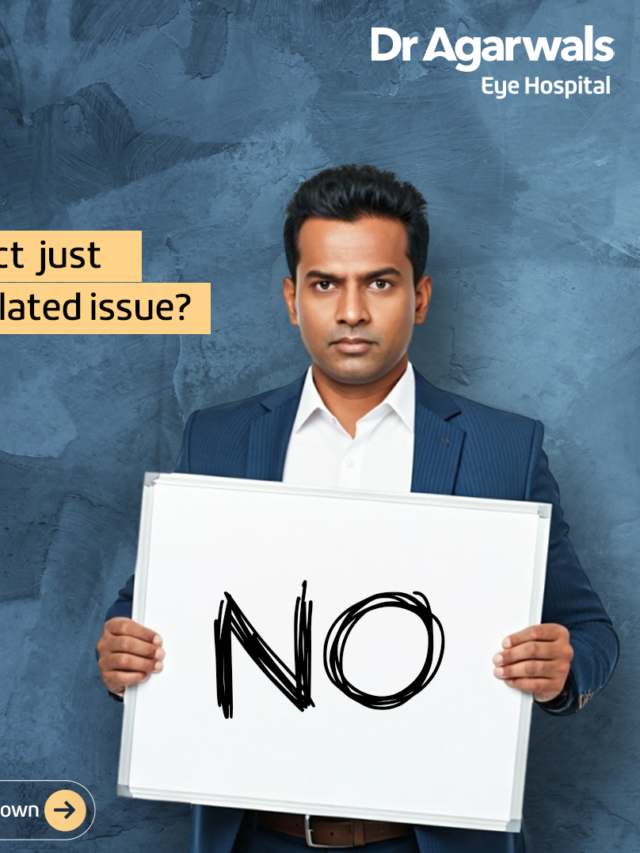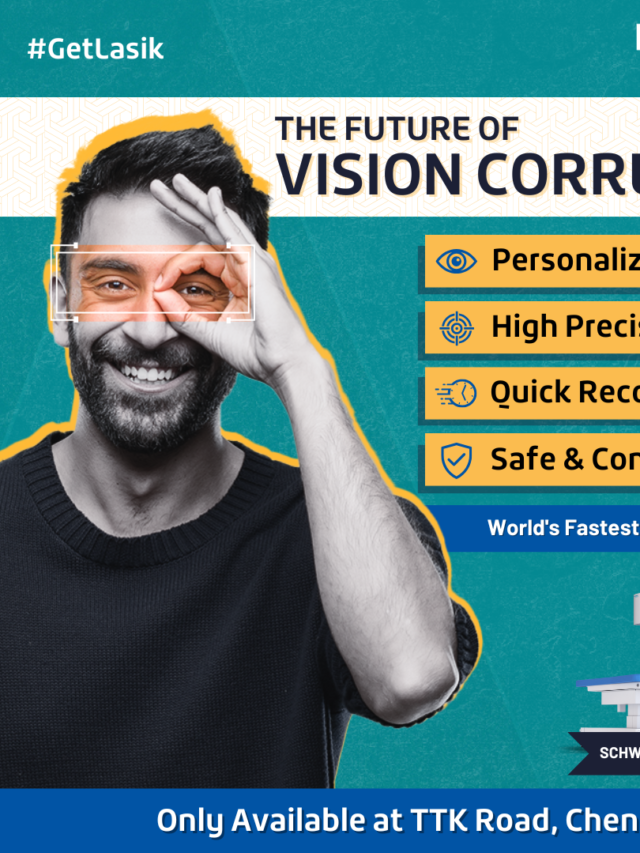Key Takeaways
- 53-year-old Vishnudas from Navi Mumbai had seen a decline in vision due to cataracts. His doctor encouraged surgery.
- Cataracts are most commonly found in anyone over the age of 50. They cloud the lens in the eye and gradually decrease vision.
- Vishnudas had to work with a computer; doctors recommend a multifocal lens, allowing for both near and distance vision.
- Visnudas had surgery on his right eye through an eye hospital, which included a multifocal lens; he received eye drops for recovery.
- Vishnudas could see great and encouraged an early cataract surgery and to be counselled on lens options.
Vishnudas*, a 53 year old businessperson by profession, resident of Nerul, Navi Mumbai, visited AEHI for his routine eye check-up in Dec 2016. Upon eye examination, it was found that he had started developing a thin white like substance (Nuclear Sclerosis) on his lens leading to poor vision. He was prescribed glasses with new lens power and was advised for follow up.
On the follow up day, Mr Vishnudas informed us about recurring headache and blurry vision. On assessing the condition, both eyes showed that the white or cloudy layer was increasing to its next level i.e. Nuclear Sclerosis Grade II indicating Cataract. To this, Dr. Rajesh Mishra, an eye doctor specialising in Cataract treatment, recommended cataract eye surgery to remove the cloudy layer formed on his lens.
Cataract is the most common eye disease which causes vision loss. It affects the lens of the eyes that and is usually seen in people over the age of 50. The working of eye’s lens is similar to camera’s lens, which is to focus light properly for clear vision for nearby as well as far away objects.
During the counselling session, our team carefully evaluated Vishnudas’s lifestyle and professional demands, particularly his need for prolonged computer use. Drawing on extensive experience in cataract management, the doctor recommended a multifocal lens to support clear vision at multiple distances, ideal for his daily tasks and long-term comfort.
A multifocal intraocular lens is engineered to offer seamless vision across near, intermediate, and far distances by integrating multiple focal zones into a single lens. For patients like Vishnudas who rely heavily on screens for work and require visual clarity in day-to-day activities, this type of lens offers a practical and clinically backed solution that reduces dependency on spectacles after cataract surgery.
In this case, a monofocal lens could not have been all right for him, because, it allows clear vision only for far away objects but Vishnudas would have required spectacles or glasses for near vision. Since, this type of lens could not have been satisfactory for his work profile for a longer period, a multifocal lens was recommended to him.
Taking Vishnudas’s overall health into account, the surgery on his right eye was performed first by Dr Rajesh Mishra, a highly experienced cataract specialist. The cloudy natural lens was safely removed and replaced with a multifocal intraocular lens, restoring his vision with improved clarity at multiple distances. Post this surgery, suitable eye drops were prescribed to him as a part of post-surgery medication and care.
With each progressing day post-surgery, Vishnudas’s joy knew no bounds to see every object with outstanding clarity. He is one of our most satisfied patients who still walks in the hospital for going-on follow up gushing about his new life
If you begin noticing a slight cloudiness in your vision, it is essential to consult a qualified ophthalmologist promptly. Early evaluation helps determine whether cataract surgery or another appropriate treatment is necessary, depending on your individual eye health and lifestyle needs.
Always have a thorough counselling session with your eye care professional while choosing a lens.
Factors to Consider When Choosing the Right Lens
When planning for cataract surgery, selecting the right intraocular lens (IOL) is one of the most important decisions. The choice depends not only on your visual goals but also on your lifestyle, eye health, and budget. Modern IOLs are designed to address specific visual needs, whether for distance, reading, or both. Below are some key considerations to help guide the discussion with your ophthalmologist.
Does Your Lifestyle Rely on Near Vision?
If your day-to-day activities include frequent reading, sewing, computer use, or using a smartphone, near vision clarity is vital. In such cases, multifocal or extended depth-of-focus (EDOF) lenses may be considered. These lenses are designed to reduce dependence on reading glasses by offering clearer vision at close and intermediate ranges.
Do You Frequently Drive at Night?
Patients who drive often, particularly at night, should be cautious with certain IOL types. Some multifocal lenses may cause glare or haloes under low-light conditions. A monofocal lens set for distance vision or an EDOF lens might be a better option to ensure safer and more comfortable night driving.
Do You Have Moderate to High Astigmatism?
Astigmatism causes blurred or distorted vision and must be corrected for optimal post-surgery results. Toric intraocular lenses are specially designed to correct corneal astigmatism during cataract surgery. If your pre-operative tests reveal moderate to high levels of astigmatism, a toric lens may be recommended to reduce the need for glasses after surgery.
Do You Have Other Eye Conditions?
Patients with conditions like macular degeneration, diabetic retinopathy, or glaucoma may not benefit fully from premium IOLs such as multifocal or EDOF lenses. In such cases, your surgeon may recommend monofocal lenses, which provide reliable distance vision and are generally better tolerated by eyes with retinal or optic nerve issues.
The Importance of Consulting Your Ophthalmologist for Lens Selection
Choosing the right IOL is not a one-size-fits-all decision. A detailed consultation with your ophthalmologist ensures the lens aligns with your visual goals, eye health, and lifestyle. Your doctor will assess multiple factors, including corneal shape, retinal health, pupil size, and your tolerance for visual phenomena like glare. This personalised evaluation helps determine the most suitable lens type, be it monofocal, multifocal, EDOF, toric, or phakic. Always rely on the expertise of a trained ophthalmic surgeon when making this choice.
Advantages and Limitations of Different Intraocular Lenses
|
Lens Type |
Advantages |
Limitations |
|
Monofocal IOL |
Excellent for distance vision; widely used; cost-effective |
Reading glasses are often needed for near work |
|
Multifocal IOL |
Offers vision at multiple distances; reduces dependence on glasses |
May cause glare or haloes; not ideal for night driving or with retinal issues |
|
EDOF IOL |
Good intermediate and distance vision; less glare than multifocal |
Reading glasses may still be needed for fine print |
|
Toric IOL |
Corrects astigmatism; improves overall clarity |
More expensive, specific to patients with astigmatism |
|
Phakic IOL (for non-cataract cases) |
Suitable for high refractive errors |
Not suitable for all; requires healthy eye anatomy |
Each lens type offers distinct benefits and limitations. Your doctor will help you weigh the options based on your unique ocular profile.
Adjusting to Your New Lenses
After IOL implantation, it may take a few days to a few weeks for your brain and eyes to fully adapt to the new lens. Visual clarity improves steadily as your eye heals and neuroadaptation occurs. During this time:
- Follow your prescribed medication schedule
- Attend all follow-up appointments
- Avoid strenuous activities and rubbing your eyes
- Use sunglasses outdoors to reduce light sensitivity
Your ophthalmologist will guide you on expected changes and support you through the recovery period. If you have opted for multifocal or toric lenses, a short adjustment period is normal as your visual system adapts to the new focusing pattern.
Disclaimer:
Information on this page is for general awareness and does not constitute medical advice. Please consult a qualified specialist for diagnosis and treatment tailored to your specific eye condition.










